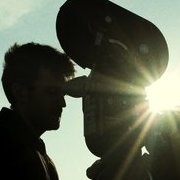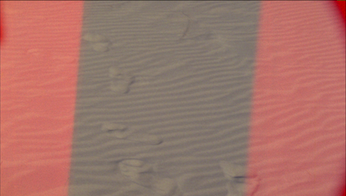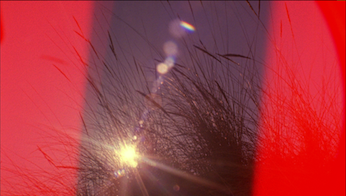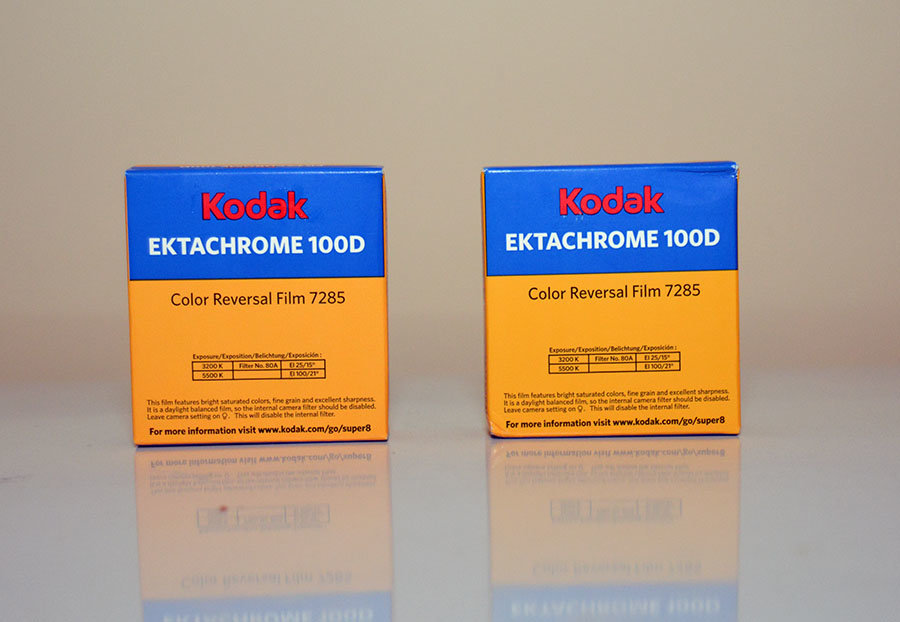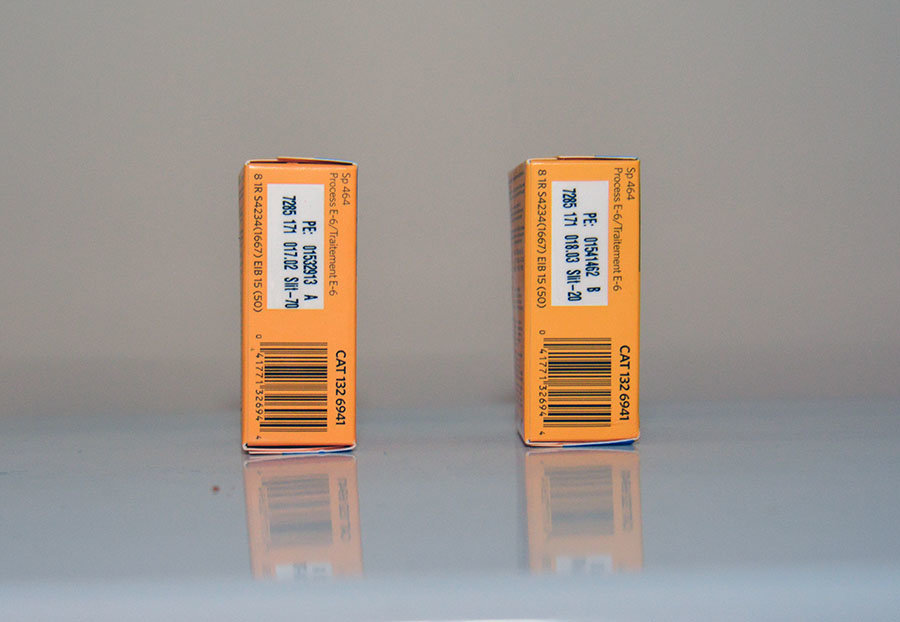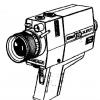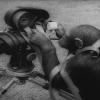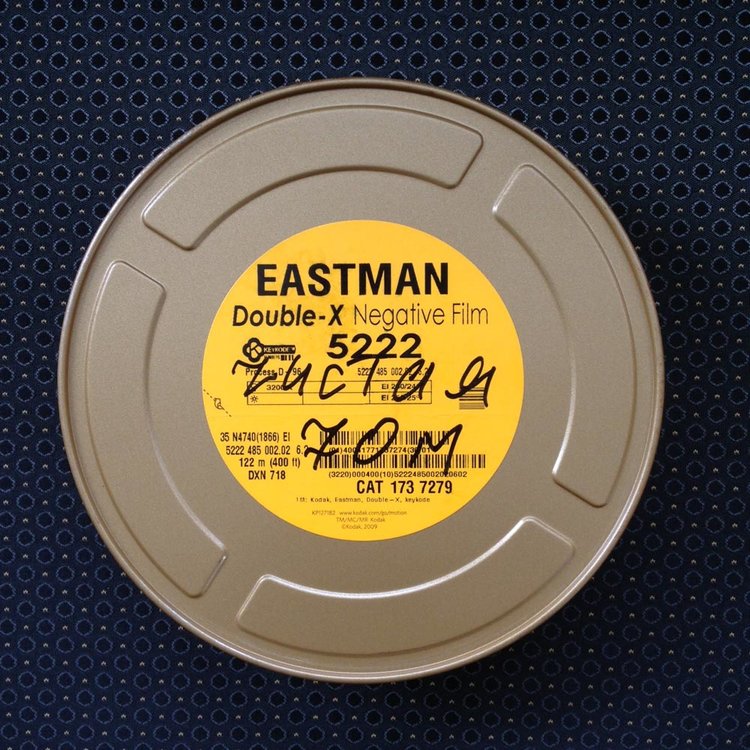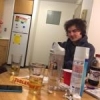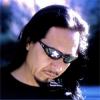Search the Community
Showing results for tags 'KODAK'.
-
IT IS HERE AT LAST Silence is Marty Scorsese's passion project he's been wanting to make for 27 years ever since he read in 1989 the book Silence written by Shūsaku Endō. It is set in the seventeenth century, it follows two young Portuguese Jesuit priests (Garfield, Driver) who face violence and persecution when they travel to Japan to locate their mentor (Neeson) and propagate Christianity. They shot for 8 months in Taiwan with a crew of 750 people for a budget of 48 million dollars. It opens on December 23rd as a limited release and in January wide. It is shot by Scorsese's new go-to cinematographer, ie the great Rodrigo Prieto who shot The Wolf Of Wall Street, and the pilot of Vinyl (HBO) with him. They shot on film for the day scenes and on the Alexa for night scenes, just as they did on Wolf. There's an article to come in the January issue of AC (which will be an issue featuring articles exclusively (except for Passengers shot by Prieto on the Alexa 65) of films shot on film).
- 10 replies
-
Hi, everyone It's my first time posting here :) I've received my first test roll (Kodak 200T) from the lab, shot with my K-3 and the 17mm-69mm Zenit. Loaded carefully in semi-darkness and unloaded in total darkness. Camera was covered with plastic tape when filming (except the meter counter). I found two issues: There are light leaks all over the footage. Not following a constant pattern, some shots are more affected than others but always with the same shape. I've attached two stills of them. I set the speed at 24fps but the footage is in fast motion with the telecine at 24fps. It looks as it was filmed between 12fps or 14fps. I made two shots at 48fps additionally and that ones are running at the correct speed to me. Is it possible that the fps dial is not matching the actual speed? Thank you very much everyone, Marcos
- 10 replies
-
- krasnogorsk3
- 16mm
-
(and 3 more)
Tagged with:
-
Hi, i'm trying to cut costs and working on a film project shot entirely on Kodak 7222. If anybody has some for sale, i'm interested. thanks Constantin
-
For Sale: 2 cartridges of Kodak Super 8 Ektachrome 100D film. Has been kept in freezer since purchased from Kodak. Asking $120.00 US plus shipping.
-
Hey, Ive got about 4000' of old fuji that I am planning on shooting a short on. Ive had it for about 6 years in my fridge. its half Eterna 250T 8553 and half Eterna 250D 8546. I just got the snip test back from fotokem and it looks like my layers are between .25 (red and green) and .70 (blue) off from what they should be. Im wondering if, for instance, I could add a yellow filter to my lens when I shoot to make the overall shift of my blue channel get back more in line with the other channels? Does it work that simply, or am I missing something. My thinking goes that if I add 1 stop of yellow to the overall image, then that would put my blue channel at roughly .20 over where it needs to be, and then if I over expose by a stop then that will help the overall quality of the image (though it will still be grainier than normal and a little funky in the colors. Is this reasoning sound?
-
I recently purchased the expired Kodak Film Stock listed below and would like any suggestions on the best F-Stops for exposure. I plan to telecine to 1080p or 2K. Will be using a K-3 16mm camera. 7246-250D 7274-200T 7279-500T 7289-800T 7298-500T Thanks Nate
-
Colorlab and Kodak are having a film workshop on October 26th and 27th in Rockville, MD. Randy Tack, cinematographer and lead imaging instructor for Eastman Kodak, will be leading the workshop. Topics covered include 16mm and 35mm cinematography and the motion picture film workflow. Participants will be shooting and screening dailies both on film and digitally. Please pass on the information to anyone you think may be interested. It's FREE, but spots are limited and filling up fast! For more information or to register, go to: http://www.colorlab.com/workshop.html
-
Hello, this is my very first post on this forum so first of all thank you all for having some time to read and answer this question. I'm going to shoot a project on S16 (arri 416 plus) next month and I don't have nearly the same experience with film than digital so I'm sorry if this sounds really newbie. Basically I'd like to know what's the real and usable dynamic range of kodak Vision3 and all the elements that affects it (print, scan, etc). I Research on this forum, internet and on Kodak's website and the numbers change considerably. Kodak says it's about 10-11 stops, then I read that the official number is 14 (this is hard to believe) and some friends told me it's about 7 stops (-3, +4). Also I wanted to know if the print and the scan are really important to save the dynamic range. I read a Kodak document that recommends to use 16bit scan when the stock is Vision3 to hold all the dynamic range in there. Also, which scanner do you recommend me? What I read the best one is DPX 16bit but it may be really expensive so I'd like to have a cheapest solution that can hold the DR of the film. Thanks!
-
I am selling Kodak Double X 35mm film short ends - 70 meters, or 230 ft. From another film production earlier this year. Purchased directly from Kodak, kept refrigerated at all times. Kodak rates it as 250asa, i shot is as 125 and got lots of details in shadows. I can ship it with USPS priority service in the US. 100$
-
I recently purchased some Kodak Vision3 re-cans and short-ends film stock. I’ve read differing opinions in regards to refrigerating versus freezing the film. Some have recommended to not freeze the film as it may be damaged from the process. Is there any general consensus as to the best practice for storing film? Kodak literature states that freezing film is an appropriate step for longer term storage (more than six months). I don’t know when I may use it and if the time period will exceed six months. Can I promptly freeze the film to slow the degradation process? With my film stock being re-cans and short-ends, I feel I should be more mindful of degradation, but with it not being in factory-sealed cans anymore should I avoid freezing? What are the best techniques to safely store new and opened film stock? Fridge or freezer? Should I place the cans in zipped plastic bags? Should I insert selica gel packets to reduce moisture? Any tips or suggestions would be helpful. Thanks!
-
Updated and reduced price from earlier this year. I currently have a small inventory of factory sealed cans of Kodak 16mm negative in storage in France. I had planned to shoot it myself, but the need is no longer there, so I'm willing to sell it at a discount. If you're interested, and located anywhere in Europe, it would be easy for me to ship it. I have in proper storage: 9 brand new sealed 400' cans of 7203 50D 1 brand new sealed 400' can of 7207 250D 200ft shortend of 7219 500T 100ft shortend of 7203 50D 240ft shortend of 7203 50D The new cans are 70 euros each and assuming someone wants to buy alll 10 cans I'll throw in all of the shortends for free. You have my guarantee they are just as shootable though. The shortends where made at the end of shooting days when film was still remaining in the camera mag but it needed to be loaded with a different stock for the following day. The rolls were cut with scissors in a changing bag and put back in their cans, still on a core. To reiterate: - 70€ / can (preferably would like all 10 purchased) + shipping Message me if interested.
-
Hello, I was wondering, how close the Vision 3 films are to each other? Of course the sensitivity and grain differ, but are there much if any differences in terms of colour, contrast and perhaps sharpness too? After all they are being advertised as being intercuttable. If the obvious things like grain are not taken into consideration, would it be impossible to distinguish the different Vision 3 stocks from each other? To a slighty other thing, if the Vision 3 films are very similar, does it make a lot of sense to have 4 stocks that practically look the same? It shouldn't be a big thing to add an extra stop of ND or an 85 filter. Kind regards, Valter
-
Earlier today I purchased a Kodak Instamatic M6 Super movie camera. It is missing the battery and the cover for the meter, and I am unsure of what battery it runs. I put 3 batteries into the pack on the bottom, and put a cartridge of film on it, and as dumb as it sounds, I have no idea how to turn it on. I tried pressing the trigger, but nothing happens. Is it because I do not have a battery in the meter? And if so, what is the battery I need for it?
- 1 reply
-
- Kodak
- Instamatic
-
(and 1 more)
Tagged with:
-
http://goo.gl/R5ZPn0 Interesting read, but I think it got a little heavy handed against digital. Particularly that his argument about an audiences reaction to pixels vs film seems pretty moot when everything is scanned and presented on digital projectors these days. Would be interested to hear other peoples thoughts.
-
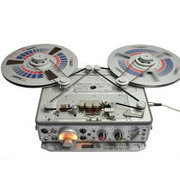
Fomapan R100 Kit + Kodak Tri-X 7266 failure
Roger Cambell posted a topic in Film Stocks & Processing
Hello everybody. My name is Rogers and this is my first time posting on Cinematography.com Today for a school project I attempted developing Kodak Tri-X 7266 with a Fomapan R100 Kit in a lomo tank. I followed the instructions yet the project did not work well. It appears as if the whole emulsion was removed from the base of the film leaving it clear. My problem is I can't figure out at what step this happened. Would someone have any information on what could have caused this to happen? Perhaps it was during bleaching something went wrong? Also, it would be nice to understand the re-exposure part a little bit more. This was my first time so I was expecting some chaos. Thank for reading my post and to anyone who can spare some info! -
I'm shooting a project on Vision 3 250D & 500T 16mm soon, we will be scanning to 2K. I've only shot 16 mil once before and am hoping to get something that will look sharper than we got last time. This is what we ended up with last time. http://www.marzmiller.com/ghost (this was also a 1080 telecine, not a 2K scan, processed normally and telecined at Fotokem) Right now I'm thinking of shooting up a stop and a half and pulling one stop, as well as some de-graining in post. Any other ideas on how to get the look I'm going for? I guess the look could best be described as I want it to look like very clean 35mm. We just don't have the dough for 35 this time. - M
-
Does anyone know if using anamorphic lenses on S16mm was common before the release of the Hawk V-Lite16 lenses? I'm looking to shoot a project on these lenses soon and am hoping to use an Aaton XTR, just wondering if it will be easy to find an anamorphic viewfinder attachment for the camera. Or if it would be better to go with a SR camera. A 416 seems to be out of the question for now due to budget reasons. I believe this camera shares the viewfinder design with the SR cameras anyway. (the 416 I used just had SR ground glass in it.) Alternatively what other (if any) Anamorphic 16mm lenses are available in Los Angeles. - M
-
Hello Recently purchased a Kodak Instamatic M22 off ebay for £10 with some new film, the listing stated it was not tested but i took a chance anyway. So it came and didn't work, turns out the batteries had corroded so i cleaned it out and popped in some new AA's, pressed the exposure and sure enough the motor buzzed away like a bee. However having opened up the catridge slot i could see that even though the motor was working the film cartridge turner thingy wasn't moving, after a browse online i found out these things have weak gears that break so i got out the screwdriver and took it apart, all the gears are in great condition so i don't know what could be causing this to not work. Any help much appreciated, thanks
-
Hey all, hoping for a bit of advice. Having some trouble with an approaching s16mm shoot- a darkroom scene. I was hoping to light mainly with practical florescent 2x4's and then to gel them fully red for some sequences. My question is: with the interior location, I thought I should shoot on 7219 500T... should I use tungsten tubes? Or would daylight tubes be better for the gel? I know daylight-balanced bulbs on tungsten stock will come away rather cyan, which I don't mind. But gelled, what should I expect? I could shoot on 250D, but am nervous that the light loss from the gels will give me a tough exposure. What setup of stock and bulbs (filtration?) do you think is best? Unfortunately, there just doesn't seem to be budget for tests. I also read in an older post here that there were issues with focusing, or that the image (red lit) will look soft. Is this a genuine focusing issue? Or should we just measure out as per usual? The last thing here that freaked me out was that someone noted that my light meter will give me an improper reading under these red conditions. Does anyone have any experience with this type of setup? Thanks so much for your input. Any advice would help!
- 3 replies
-
- flourescent
- darkroom
-
(and 6 more)
Tagged with:
-
Hello all, I am looking for Kodak 5219/ Fuji 8547 Recans, Short ends and factory sealed. If you have any/know where I can get them please let me know. I've already checked with the major resellers.
-
https://youtu.be/wr6NdyP4y-k?t=30m Start at 30 min or a little before that (should be there already) and enjoy. Poetry to my ears. They also mention the motion smoothing on TVs as default, film exhibition, ........... "A super 16 tap into a monitor looks like scrambled pornography from the 80's" Best quote ever from Alex Ross Perry.
-
I had the privilege to attend CES to witness the new Kodak's Super 8 Film Camera. Most important, they kindly allowed me to hold it in my hands. I couldn’t help myself falling in love with it at first sight. MOY
- 45 replies
-
- 1
-

-
- Super 8
- Film Camera
-
(and 1 more)
Tagged with:
-
Screening of Semi-Finalists at Slamdance Showcases Glorious Array of Super 8 Films Kodak announced the Grand Prize winners of the KODAK Super 8 Filmmaking Challenge, following a screening of remarkable works from the 15 semi-finalists’ films at the Slamdance Film Festival last night. Kodak launched the Super 8 Filmmaking Challenge in November 2015 as part of the company’s celebration of the 50th anniversary of Super 8, a beloved format that inspires content creators far and wide. The Challenge immediately struck a creative chord, and over 530 films from around the world – narrative, music videos, experimental, classic surf and skate, documentaries, archival, fashion, and home movies – were submitted. The films showcase the robust depth of talent among filmmakers, both professionals and amateurs alike, as well as the diverse range of the capabilities of Super 8 as a unique storytelling tool. Filmmakers entered both vintage and new work in one of three categories: POV, Action and Flashback. From the original entries, 15 semi-finalists were chosen through online audience voting and juried selection. Those 15 semi-finalists, who earned a hosted screening at the esteemed Slamdance fest, competed again in a global online audience vote, which determined the final first, second and third place audience winners. Boasting prizes valued at $12,500, the Grand Prize Audience winners of Kodak’s inaugural online contest are: 1. Pablo Madrid Lopez from Spain for THE NOVEL, receiving a prize package that consists of a KODAK PixPro SP360 Action Camera, a Rhonda CAM Super 8 Camera from Pro8mm, 10 Pro8mm Super 8 film kits, approximately $2,000 retail value of KODAK motion picture film of the winner’s choosing, and a KODAK t-shirt. 2. Haven Nutt from the United States for the MR. MAN trailer won a KODAK PixPro SP360 Action Camera, six Super 8 film kits, and a KODAK t-shirt. 3. Dianne Ouellette from Canada for RED IS DEAD takes home a KODAK PixPro SP360 Action Camera, three Pro8mm Super 8 film kits, and a KODAK t-shirt. Renato Coelho from Brazil, who directed TRAIN, won the Grand Jury Award, which was chosen by a panel of respected industry professionals. Judges included cinematographer Rachel Morrison; photographer Elliott Landy; writer-producer Josh Friedman; Glenn Gainor, head of physical production at Sony Screen Gems; Leslie Raymond, executive director of the Ann Arbor Film Festival; and Pro8mm founders Phil and Rhonda Vigeant. Coelho earns an identical prize package as the first place Grand Prize Audience winner. “Jurying the Super 8 Challenge allowed me to reconnect with the medium and see the variety of creative exploration,” said Raymond, who led the jury. “I am excited to see it persisting as a member of the film family.” At the Consumer Electronics Show (CES) in Las Vegas earlier this month, Kodak announced an initiative to support Super 8 film into the future. The company introduced a prototype of a new Super 8 camera, and revealed plans for creating an ecosystem that includes a range of cameras, film development services, post production tools and more. “Kodak is resolute in our efforts to ensure film continues to be an option for filmmakers passionate about using it for all levels of content creation,” said Sascha Rice, Global Marketing Director for Kodak’s Entertainment Imaging Division. “The response to this contest and to the new Super 8 camera has been overwhelmingly positive, and the momentum to shoot on film is palpable. Kodak is honored to be here to support and advance these artists’ creativity.” To discover recent movies, television, and music videos shot on 8mm, 16mm, 35mm, and 65mm film, go to: www.kodak.com/go/shotonfilm.
-
- Kodak
- Film Festival
-
(and 7 more)
Tagged with:
-
Here is my new article on Super 8 which was written before all the new announcements: http://www.redsharknews.com/production/item/3180-shooting-on-super-8-in-the-21st-century Sadly a lot of the links got lost somewhere in editorial which takes away from the usefulness slightly but I'm sure you can all google for the missing sites. There's a lot of info here on how can work with Super 8 cheaply right now. Should be helpful if combined with some local info. Freya
- 6 replies
-
- Super 8
- getting started
-
(and 1 more)
Tagged with:
-
http://theaudienceawards.com/films/lights-and-shadows-oshea-brothers52174 Comprised over 6 years of shooting Kodak Motion Picture Film, "Lights and Shadows" is my love letter to film as well as skateboarding. Shot on discontinued plus-x and 100D reversal as well as the gorgeous Vision 3 color negative stocks. I really hope the members of the cinematography.com community will take the time to view my film submission and vote in my favor as I'd love to continue shooting film for all of my future projects. Thanks! - Hunter O'Shea



